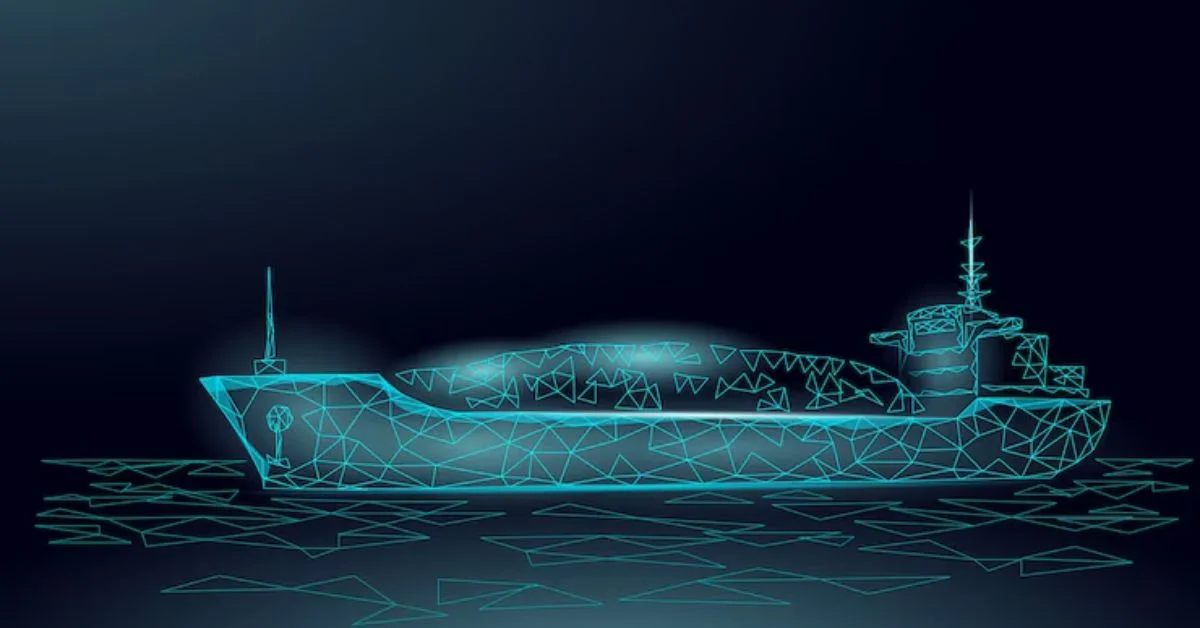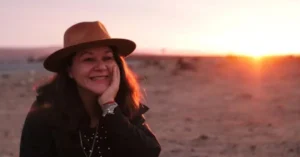Ocean electronic refers to the vast field of technologies used to monitor, manage, and interact with marine environments. These include electronic devices and systems for oceanography, navigation, underwater communication, maritime safety, environmental monitoring, and renewable ocean energy. From sensor-laden buoys that track climate data to sonar networks mapping the seabed, ocean electronics are vital to both scientific understanding and commercial maritime operations. This article provides a comprehensive overview of ocean electronic systems—how they work, where they’re used, and what innovations are reshaping the marine tech landscape in 2025 and beyond.
Why Ocean Electronics Matter More Than Ever
The ocean covers more than 70% of our planet’s surface, yet much of it remains unexplored and under-monitored. As climate change accelerates, marine industries evolve, and ocean-based resources grow in strategic importance, ocean electronics have moved to the forefront of global attention.
From oil rigs to coral reefs, cargo ships to underwater drones, electronics are the eyes, ears, and nerve centers of human activity in marine environments. This is not simply a field of niche gadgets—it’s a rapidly growing domain central to science, energy, defense, commerce, and environmental protection.
What Are Ocean Electronics?
At its core, ocean electronics encompasses all electronic systems used in marine or underwater settings. These technologies must operate in extreme conditions—saltwater corrosion, high pressure, turbulence, and limited connectivity—making them uniquely engineered for durability and precision.
Major Categories Include:
- Sensing and Monitoring Equipment (temperature, salinity, pH, oxygen levels)
- Sonar and Acoustic Systems (navigation, mapping, marine life tracking)
- Communication and Data Transmission (underwater modems, satellite uplinks)
- Autonomous Vehicles and Robotics (AUVs, ROVs, gliders)
- Navigation and Safety Electronics (AIS, radar, GPS integration)
- Power Systems for Ocean Instruments (wave-powered batteries, solar buoys)
These systems are used in a wide range of settings—from military submarines and scientific research vessels to deep-sea mining platforms and remote fisheries.
The Core Technologies Driving Ocean Electronics
To understand ocean electronics, it helps to break down the key technologies that enable their functionality.
1. Marine Sensors and Instrumentation
Sensors are the frontline tools for gathering ocean data. Common instruments include:
- CTD sensors: Measure conductivity, temperature, and depth
- pH sensors: Track ocean acidification
- Dissolved oxygen meters: Used in aquaculture and hypoxia monitoring
- Fluorometers: Detect phytoplankton and pollution
These are deployed on moored buoys, drifting floats (like Argo systems), underwater vehicles, and even smart fishing nets.
2. Underwater Acoustics and Sonar
Since radio waves don’t travel well underwater, sound becomes the primary method of communication and detection.
- Multibeam sonar: Maps seafloors in high resolution
- Side-scan sonar: Detects submerged objects and features
- Passive acoustic monitoring: Listens for whale calls, illegal fishing, or submarine movement
Sonar systems are essential for naval defense, ocean mapping, and wildlife conservation.
3. Data Communication Systems
Getting data from the ocean to scientists or operators is a challenge.
- Acoustic modems: Short-range underwater communication
- Fiber-optic cables: Long-range and high-speed links (e.g., transoceanic cables)
- Satellite uplinks: Connect offshore buoys or autonomous vehicles to remote stations
These systems ensure real-time decision-making for environmental alerts, ship routing, and weather forecasting.
4. Energy and Power Systems
Electronics at sea need long-lasting, self-sustaining power. Innovations include:
- Wave energy converters
- Solar-powered buoys
- Tidal generators
- Hydrogen fuel cells for AUVs
Long-term deployments depend on reliable power without frequent human maintenance.
Applications of Ocean Electronics Across Industries
Ocean electronics power a wide range of industries—each with its own goals, challenges, and priorities.
1. Environmental Monitoring and Climate Science
Understanding the ocean is critical to forecasting climate change.
- Ocean temperature profiles influence global weather patterns
- pH and carbon sensors track acidification
- Sea level rise is monitored by satellite altimeters and tidal gauges
- Deep-sea observatories study tectonic activity and thermal vents
Data collected helps fuel global climate models and disaster preparedness systems.
2. Commercial Shipping and Navigation
Global trade relies on precise navigation and ship management.
- Electronic Chart Display and Information Systems (ECDIS)
- Automatic Identification Systems (AIS) for ship tracking
- Marine radar and GPS integration
- Electronic load-balancing systems for fuel efficiency
These systems help reduce collision risk, optimize fuel use, and comply with international maritime regulations.
3. Oil, Gas, and Deep-Sea Mining
Offshore operations require robust and safe technologies.
- Remote Operated Vehicles (ROVs) inspect pipelines
- Subsea monitoring detects leaks and corrosion
- Dynamic positioning systems keep rigs stable
- Real-time seismic data improves drilling accuracy
Environmental and safety regulations have led to high demand for real-time, sensor-driven platforms.
4. Fisheries and Aquaculture
Modern fisheries depend on electronics for sustainable yield.
- Smart nets with sonar and species identification
- Aquaculture sensors for water quality
- RFID-based tracking of tagged fish
- Satellite-linked fishing vessel monitoring systems (VMS)
Electronics help prevent overfishing and monitor illegal fishing activity.
5. Renewable Energy
Oceans are key to the future of green energy.
- Tidal turbines monitored by embedded electronics
- Wave energy converters with real-time performance sensors
- Floating solar farms with energy and data tracking
Electronic systems optimize output and ensure equipment longevity in harsh sea conditions.
6. Military and Security
Navies around the world use ocean electronics for strategic superiority.
- Underwater surveillance networks
- Submarine detection and tracking systems
- Electronic warfare decoys
- Secure acoustic communication arrays
These systems operate autonomously or with minimal intervention for months or even years.
Innovation Trends in Ocean Electronics (2025 and Beyond)
As global focus shifts to ocean-based solutions for food, energy, and security, the electronics that enable these goals are also evolving.
1. Miniaturization and Low-Power Design
New components allow for smaller, smarter, and energy-efficient devices. A single drone can now carry a full oceanographic sensor suite the size of a lunchbox.
2. Edge Computing in Marine Systems
Rather than sending raw data to shore, ocean instruments now process it on-site to detect patterns, optimize routes, or issue alerts autonomously.
3. AI and Machine Learning for Marine Robotics
AUVs and gliders use AI to:
- Avoid marine life
- Map more efficiently
- Adapt missions in real time
This reduces human oversight and increases mission reliability.
4. Swarm Technology
Dozens of micro-sensors or drones working together allow for faster ocean mapping and better disaster response. Swarms communicate and adapt collaboratively.
5. Green Electronics
Non-toxic batteries, recyclable materials, and solar-optimized circuits reduce the environmental impact of discarded marine electronics.
The Role of Ocean Electronics in Conservation
Ocean electronics are vital for protecting marine ecosystems under threat from pollution, warming, and human encroachment.
Examples Include:
- Acoustic tags on whales to avoid ship strikes
- Real-time coral bleaching alerts from temperature sensors
- Monitoring buoys around marine protected areas
- Detection of underwater noise pollution affecting marine mammals
These systems provide data critical to shaping environmental policy and evaluating restoration success.
Challenges Facing Ocean Electronics
Despite rapid growth, the sector faces several enduring challenges:
1. Harsh Environmental Conditions
Saltwater, storms, ice, and pressure create intense wear and tear. Devices must be heavily waterproofed, corrosion-resistant, and pressure-rated.
2. Data Transmission Bottlenecks
Long-distance, underwater data transmission remains slow and expensive compared to terrestrial networks.
3. Power Limitations
Keeping devices operational for months in remote areas is difficult without human maintenance or power sources.
4. Cost and Accessibility
High-end ocean electronics are still cost-prohibitive for many developing countries and small research groups.
5. Ecological Impact of Deployment
Cables, anchors, and emissions from powered devices can disrupt sensitive habitats if not managed carefully.
Conclusion: The Sea, Wired and Aware
As humanity looks to the ocean for answers—to climate challenges, food security, and energy demand—our ability to interact responsibly with that environment depends on electronics. The ocean electronic sector provides the backbone for this new era of marine exploration and stewardship.
No longer confined to military submarines or bulky research vessels, ocean electronics are now autonomous, smart, efficient, and essential to everything from sustainable fishing to sea-level forecasting.
The real value of ocean electronics lies not just in the data they collect, but in the decisions they enable—smarter shipping routes, faster emergency responses, better protected ecosystems, and cleaner energy futures.
If the 20th century was about conquering land and sky with machines, the 21st may be remembered for wiring the ocean.
Frequently Asked Questions (FAQs)
1. What does “ocean electronic” refer to?
It refers to all electronic systems used for sensing, monitoring, navigating, or communicating in marine environments, including research, commercial, and military applications.
2. Where are ocean electronics most commonly used?
They’re used in oceanography, fisheries, offshore energy, maritime navigation, environmental conservation, and underwater defense systems.
3. How are ocean electronics powered?
Through a mix of solar, wave energy, battery systems, and sometimes fuel cells, depending on the device and deployment duration.
4. Are ocean electronics environmentally safe?
Modern designs focus on sustainability with recyclable parts, minimal noise output, and low ecological footprints, but all deployments require environmental planning.
5. Can ocean electronics help combat climate change?
Yes, by providing real-time data on ocean temperatures, carbon cycles, and sea-level changes, they inform policies and help track global climate progress.
For more information, click here.









